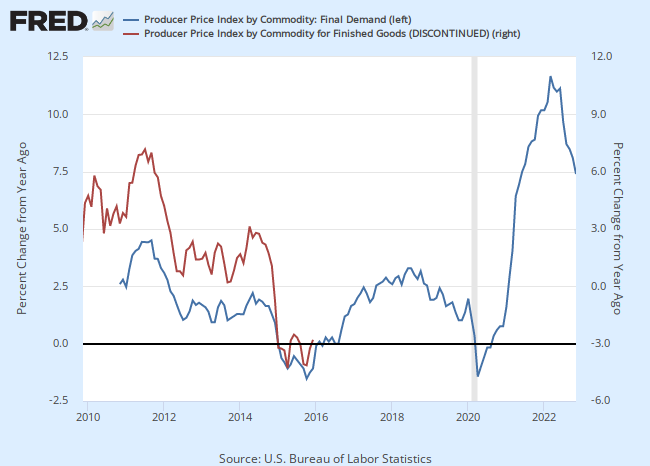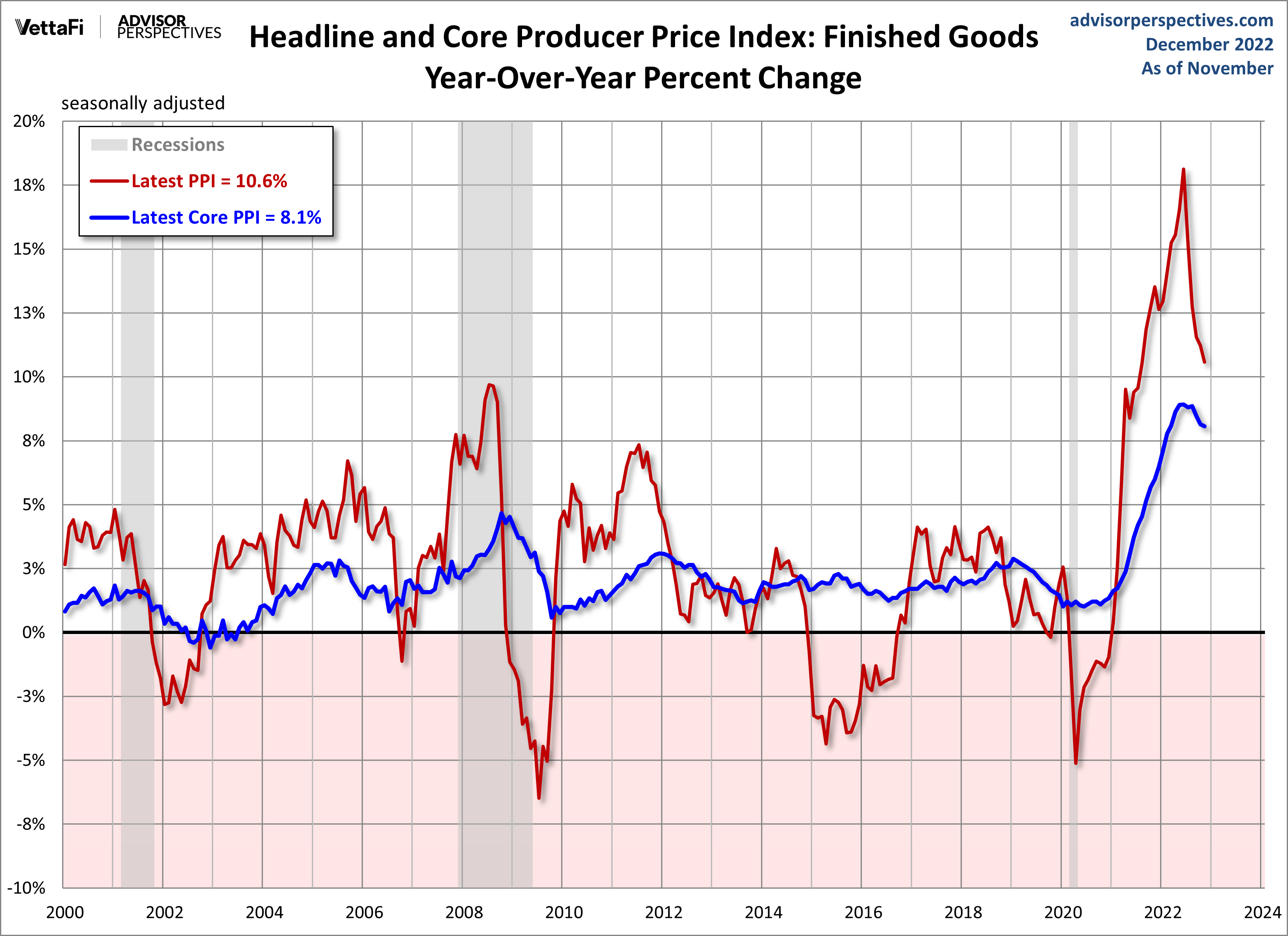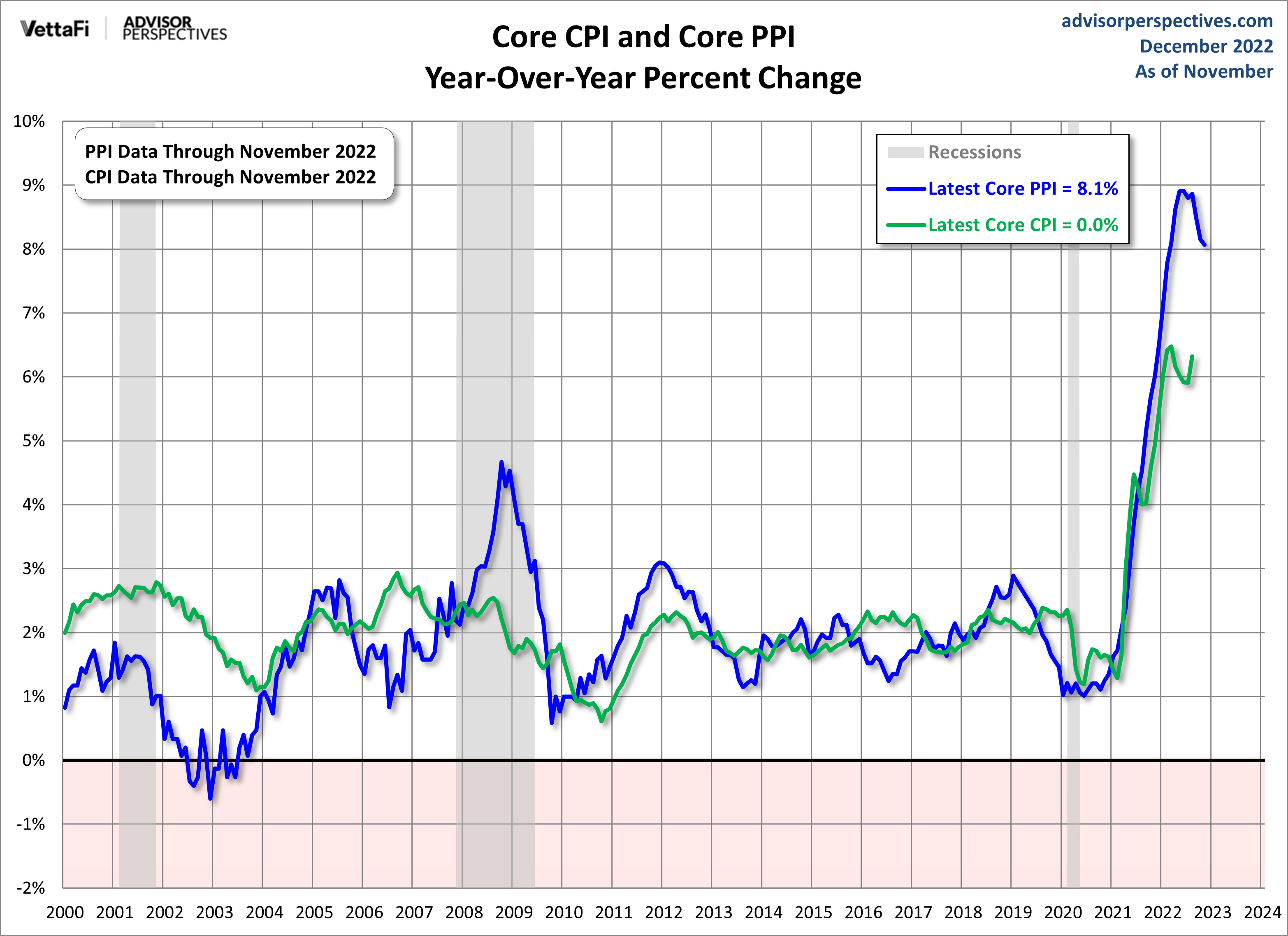November Producer Price Index: Finished Goods At 10.6% YoY
This morning's release of the November Producer Price Index (PPI) for Finished Goods was up 0.2% month-over-month seasonally adjusted, down from a 1.1% increase last month. It is at 10.6% year-over-year, down from an 11.2% increase last month, on a non-seasonally adjusted basis.
The November PPI for Final Demand was at 0.3% month-over-month seasonally adjusted, unchanged from last month's increase. Investing.com MoM consensus forecast for the Final Demand headline was 0.2%.
Here is the summary of the news release on Final Demand:
The Producer Price Index for final demand advanced 0.3 percent in November, seasonally adjusted, the U.S. Bureau of Labor Statistics reported today. Final demand prices also rose 0.3 percent in both October and September. (See table A.) On an unadjusted basis, the index for final demand moved up 7.4 percent for the 12 months ended in November.
In November, most of the increase in the index for final demand is attributable to a 0.4-percent advance in prices for final demand services. The index for final demand goods inched up 0.1 percent.
Prices for final demand less foods, energy, and trade services moved up 0.3 percent in November after rising 0.2 percent in October. For the 12 months ended in November, the index for final demand less foods, energy, and trade services increased 4.9 percent.
Finished Goods: Headline and Core
The BLS shifted its focus to its new "Final Demand" series in 2014, a shift we support. However, the data for these series are only constructed back to November 2009 for Headline and April 2010 for Core. Since our focus is on longer-term trends, we continue to track the legacy Producer Price Index for Finished Goods, which the BLS also includes in their monthly updates.
As this (older) overlay illustrates, the Final Demand and Finished Goods indexes are highly correlated.
FRED® Graphs ©Federal Reserve Bank of St. Louis. All rights reserved.
As the next chart shows, the Core Producer Price Index is far more volatile than the Core Consumer Price Index. For example, during the last recession producers were unable to pass cost increases to the consumer.
More By This Author:
Full-Time And Part-Time Employment: A Deeper Look - Friday, Dec. 9
Weekly Unemployment Claims: Up 4K, As Forecast
Cryptocurrencies Through Wednesday, December 7






